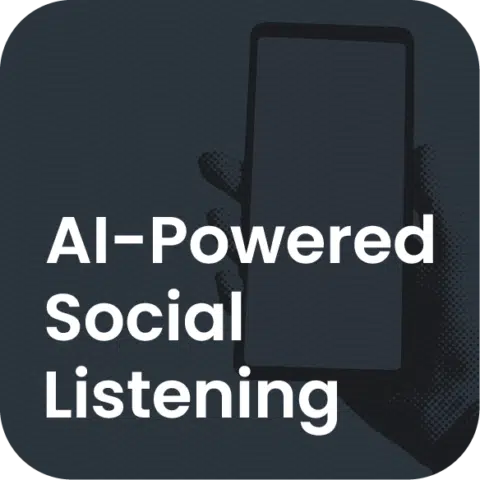The digital landscape is constantly evolving, and with every new year comes new opportunities and trends for businesses to utilize to better connect with their audiences across social media. This year, brands will need to be more strategic, authentic and community-driven than ever before to stay ahead in this highly competitive market and to remain top-of-mind for followers and consumers.
The influencer and social media marketing experts at Crowe PR, a national, award-winning integrated public relations agency, are excited to share their expert insights about what trends they expect will be at the forefront of the industry this year. From the growing popularity of micro- and nano-influencer partnerships to the evolution and comeback of throwback content, these trending and new digital strategies will undoubtedly shape how brands connect with their communities and drive increased engagement throughout the year.
Let’s dive into what we can expect to see across social media in 2025.
Increased Focus on Micro- and Nano-Influencers
While macro-influencers have been the dominant force in influencer marketing in recent years, by 2025, the pendulum will swing more towards micro-influencers, which are content creators who typically have roughly 10K to 100K followers, and nano-influencers who have under 10K followers. Rather than targeting mega-influencers or celebrities with millions of followers, brands will invest more in long-term relationships with smaller influencers, partnering with them for ultra-targeted, hyper-local campaigns to build stronger trust with specific key communities. Brands have found that longer term partnerships with highly targeted, niche creators lead to better results and resonate better with influencers’ audiences. Their followers are craving more authentic partnerships where the brand the influencer is promoting is truly a part of their daily life rather than it feeling like just another product or ad they’re being sold.
Influencer-Led Product Development
This year we will see more brands involving influencers directly in the product development and co-creation process. Influencers will not only endorse products but will act as a creative partner throughout the process of designing, innovating and launching new products. This strategy will help brands leverage the trust and creativity of their influencer partners to create products that truly resonate with their followers. We’ve already seen companies lean into this trend with brands like Gymshark, who partnered with fitness influencer Whitney Simmons to develop a specialty product line that sold out numerous times, underscoring the impact and ROI of engaging in partnerships with brand-aligned influencers from product conception to launch.
Shift Toward Community-Centric Brand Activations
The days of flashy, extravagant influencer trips and events are fading, as it’s become clear that this approach no longer resonates with consumers. Influencer activations are evolving and shifting to a new strategy that focuses on more meaningful, community-focused experiences. Now more than ever, today’s consumers – especially Gen Z – are increasingly mindful of sustainability, diversity and inclusion, areas where traditional influencer trips often fall short. Unlike previous generations, Gen Z truly holds brands accountable for their environmental impact and spending choices. Hosting smaller, intimate activations for long-time fans and customers fosters deeper connections and increases brand loyalty and long-term advocacy. It’s about making people feel valued, heard and a part of something bigger, not just entertained.
Rise of Employee-Generated Content (EGC)
Consumers are increasingly turning to employees as trusted voices over traditional influencers. People want to see the human side of brands, fun personalities, authentic experiences and the culture behind the logo. EGC gives customers a behind-the-scenes look at their favorite brands while serving as an additional touchpoint to engage potential consumers in a genuine, reliable and relatable way. Duolingo is an excellent example of humanizing the brand. Their social team has succeeded at giving their audience clear insight into what it’s like to work there, and their content is always timely and on trend. Rather than feeling like they’re being sold to, audiences seek a brand’s internal stories to determine whether its products or services align with their personal values.
Video Podcasts Dominate
Despite whispers of podcast fatigue, audiences have spoken: video podcasts are thriving. Brands like Spotify and Unwell have doubled down on this format, with Unwell launching at least five new podcast shows in 2024 alone. Major platforms like YouTube and Spotify reported increased viewership of podcasts – Spotify shared that nearly two-thirds of users in 2024 preferred their podcasts with video – reinforcing this growing trend. Unlike audio-only formats, video podcasts are easily accessible on consumers’ favorite channels like YouTube, TikTok and Instagram, eliminating the need for them to break their routine to visit closed ecosystems for listen-only content. Video podcasts’ versatility make them even more popular because they can be easily shared, clipped and repurposed across multiple channels. Throughout 2025, expect beloved TikTok creators and influencers to increasingly leverage video podcasts, cementing their role as a fan-favorite medium.
Throwback Content Makes a Comeback
The power of nostalgia marketing shows no signs of slowing down. From recreating iconic movie moments to Y2K-inspired Halloween costumes, social media thrives on throwbacks. The trend has evolved into even grittier, low-quality formats – cue the camcorder resurgence. Makeup and beauty brand Tarte, for instance, leaned into this by gifting brand trip attendees camcorders to document experiences in this trend-forward way. Nostalgia-centric marketing strengthens emotional connections by eliciting comforting or happy memories, deepening consumer engagement and taking them on a fun trip down memory lane.
As we navigate 2025 and the unexpected social changes it brings, one thing remains clear: audiences are seeking genuine connections with their favorite businesses. Brands that embrace these trends and prioritize meaningful engagement over mere reach will be best positioned to build community and loyalty, standing out in an increasingly crowded digital space.
The authors:

Crowe PR’s Alana Pulver, Kaleb McAfee, and Haley Walker




